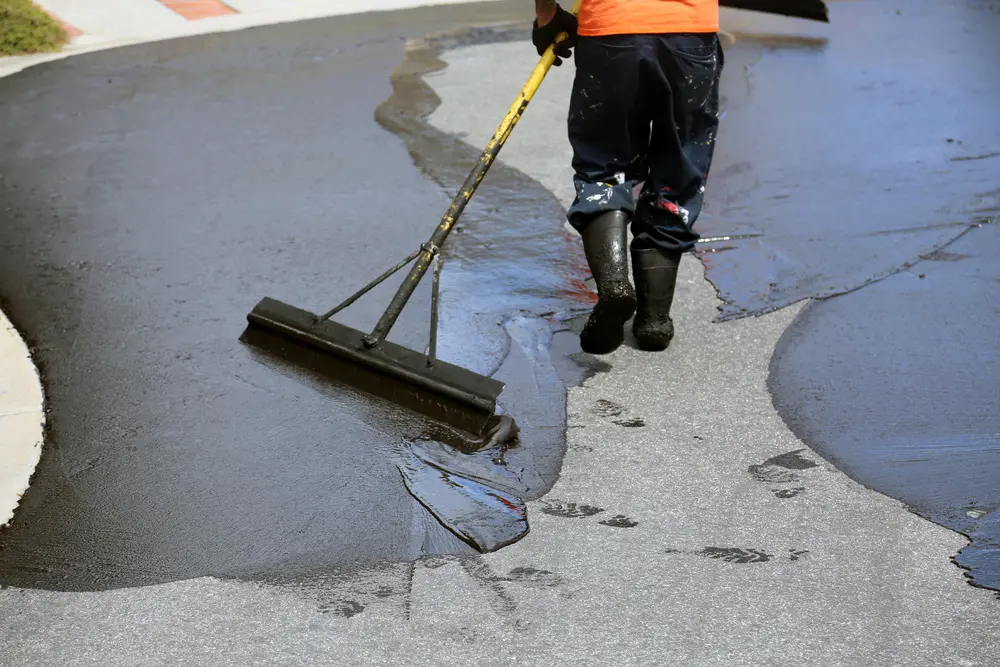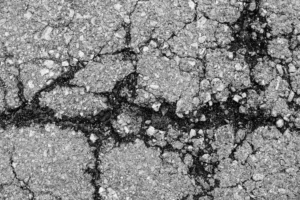Are you tired of dealing with cracked and deteriorating asphalt? Don’t fret! We’ve got you covered with 15 essential tips for preventive asphalt paving maintenance.
From regular cleaning and inspections to prompt sealing of cracks and potholes, we’ll guide you through every step. Say goodbye to debris, oil stains, and standing water, and hello to a well-maintained and long-lasting asphalt surface.
Get ready to take control of your pavement’s health and ensure its longevity with these expert tips.
Key Takeaways
- Regular cleaning and debris removal prevent debris accumulation and reduce slip and fall hazards.
- Promptly inspect and repair cracks and potholes to prevent further damage and prolong the lifespan of asphalt pavement.
- Proper stain removal and maintenance help maintain the integrity of the asphalt surface and prevent pavement deterioration.
- Applying a protective sealcoat every few years enhances the longevity of asphalt pavement by protecting against oxidation, UV rays, and water damage.
Clean Pavement Regularly
To properly maintain your asphalt pavement, regularly clean it using a broom or leaf blower. Cleaning methods are essential to keep your pavement free from debris, dirt, and leaves that can accumulate over time. By doing so, you prevent these particles from settling into the surface and causing damage.
When using a broom, make sure it has stiff bristles to effectively sweep away any loose materials. A leaf blower can also be a convenient option, as it quickly removes debris from the pavement.
In addition to cleaning methods, equipment maintenance is crucial. Regularly inspect and clean your broom or leaf blower to ensure they’re in good working condition. Clean or replace any worn parts to maintain optimal performance.
Inspect for Cracks and Potholes
Regularly inspecting your asphalt pavement for cracks and potholes is essential in maintaining its longevity and preventing further damage. Cracks and potholes can occur due to various factors such as heavy traffic, freeze-thaw cycles, and aging. By identifying these issues early on, you can address them promptly, saving you from costly repairs in the future.
To effectively inspect your pavement, you can use the following techniques:
| Techniques | Description |
|---|---|
| Visual Inspection | Visually examine the surface for cracks and potholes. Look for any signs of distress or deterioration. |
| Manual Testing | Use a screwdriver or a similar tool to probe the cracks and potholes. This will help determine their depth and severity. |
| Thermal Imaging | Use infrared cameras to detect hidden cracks and potholes that may not be visible to the naked eye. |
Once you have identified cracks and potholes, it is important to repair them promptly to prevent further damage and reduce maintenance costs. Repair techniques may include crack sealing, pothole patching, and resurfacing. Regularly inspecting and repairing your asphalt pavement will extend its lifespan and ensure a smooth and safe driving surface.
Seal Cracks and Fill Potholes Promptly
When cracks and potholes are identified, it’s crucial to promptly seal and fill them to prevent further damage and reduce maintenance costs. Neglecting these issues can lead to more extensive damage and costly repairs down the line.
Here are three important reasons why you should prioritize sealing cracks and filling potholes:
- Prevent water infiltration: Cracks and potholes allow water to seep into the pavement, leading to the erosion of the underlying layers. This can weaken the integrity of the pavement and cause further deterioration.
- Avoid further pavement damage: Cracks and potholes can expand over time due to traffic and weather conditions. By sealing cracks and filling potholes promptly, you can prevent them from growing in size and causing more extensive damage to the pavement.
- Reduce maintenance costs: By addressing cracks and potholes early on, you can prevent the need for costly resurfacing techniques or even complete pavement replacement. Regular maintenance and timely repairs can help prolong the lifespan of your asphalt pavement and save you money in the long run.
Sweep Away Debris and Leaves
Clear away debris and leaves regularly to maintain the integrity of your asphalt pavement and prevent potential hazards. Proper sweeping techniques and leaf removal methods are crucial for effective maintenance.
Start by using a broom or a leaf blower to remove loose debris and leaves from the surface. Sweep in the direction of the pavement’s slope to ensure thorough removal. For more stubborn debris, a power washer can be used, but be cautious not to damage the pavement.
Regular sweeping prevents the accumulation of debris, which can trap moisture and lead to deterioration. It also helps to prevent slips and falls, providing a safer environment for pedestrians and vehicles.
Remember to sweep regularly, especially during the fall season when leaves are more likely to accumulate.
Remove Oil and Grease Stains
To effectively maintain your asphalt pavement, it’s important to promptly and properly address oil and grease stains. These stains can penetrate the surface of the asphalt, causing it to weaken and deteriorate over time.
Here are some tips to help you remove oil and grease stains effectively:
- Absorb the excess oil or grease with an absorbent material, such as kitty litter or baking soda. Spread it over the stain and let it sit for a few hours to soak up the oils.
- Use a stiff brush and a degreaser specifically designed for asphalt surfaces. Scrub the stain vigorously to break up the oils and lift them from the pavement.
- Rinse the area with a high-pressure hose to remove any remaining residue.
Monitor and Repair Drainage Issues
To effectively maintain your asphalt pavement, it’s important that you monitor and repair any drainage issues that may arise. Proper drainage is crucial for the longevity of your pavement as it helps prevent water from seeping into the base layers and causing cracks and potholes.
Start by inspecting your pavement regularly for any signs of poor drainage, such as standing water or noticeable depressions. If you identify any issues, it’s essential to address them promptly.
Repairing cracks and improving drainage can be achieved through various methods, including filling cracks with a suitable asphalt crack filler and installing additional drains or channels to redirect water away from the pavement.
Apply a Protective Sealcoat
To further protect your asphalt pavement and prolong its lifespan, you should apply a protective sealcoat. A protective sealcoat offers numerous benefits, including:
- Protection against UV rays: The sealcoat acts as a barrier, preventing harmful UV rays from penetrating the asphalt surface, which can cause oxidation and deterioration.
- Waterproofing properties: A sealcoat provides a waterproof barrier that prevents water from seeping into the pavement, reducing the risk of cracks and potholes caused by freeze-thaw cycles.
- Enhanced appearance: Applying a sealcoat gives your asphalt pavement a fresh, dark appearance, improving its overall aesthetic appeal.
The sealcoat application process involves several steps. First, the pavement is thoroughly cleaned to remove dirt, debris, and any existing sealcoat.
Next, any cracks or potholes are repaired. Then, the sealcoat is applied using specialized equipment, such as a squeegee or spray system, ensuring an even and uniform coating. Finally, the sealcoat needs sufficient time to cure before allowing traffic back onto the pavement.
Address Fading and Discoloration
Addressing fading and discoloration can help maintain the appearance of your asphalt pavement. Preventing color fading and maintaining the surface appearance of your asphalt is crucial for a long-lasting and aesthetically pleasing pavement.
Fading and discoloration can occur due to various factors, such as UV exposure, oxidation, and chemical spills. To prevent color fading, it’s recommended to apply a UV-resistant sealcoat to protect the asphalt from harmful UV rays.
Regular cleaning and maintenance can also help maintain the surface appearance of your pavement. It’s important to promptly clean up any chemical spills or stains to prevent discoloration. Additionally, periodic resealing can help restore the color and protect the surface from further damage.
Repair and Resurface Damaged Areas
To properly maintain your asphalt pavement, it’s important to address and repair any damaged areas. Neglected damage can lead to more extensive issues over time. Here are some repair techniques and resurfacing options you can consider:
- Crack sealing: This involves filling cracks with a specialized sealant to prevent water infiltration, which can lead to further deterioration.
- Pothole patching: Potholes should be cleaned and filled with hot or cold asphalt mix, depending on the weather conditions.
- Overlaying: This method involves resurfacing the entire pavement with a new layer of asphalt to address extensive damage and restore a smooth surface.
When performing repairs, ensure that the damaged areas are properly cleaned and prepared before applying any repair materials. It’s also crucial to follow industry best practices and use high-quality materials for long-lasting results.
Regularly inspecting and promptly repairing damaged areas will extend the lifespan of your asphalt pavement and save you from costly replacements in the future.
Prevent Vegetation Growth
Prevent vegetation growth by regularly applying a herbicide to your asphalt pavement. Vegetation can cause damage to your pavement by penetrating through cracks and weakening the structure. To prevent this, it is important to take preventive measures and implement a regular herbicide application schedule.
By applying a herbicide, you can effectively control the growth of unwanted vegetation and protect your asphalt pavement. Here is a table outlining the benefits of regular herbicide application:
| Benefits of Regular Herbicide Application |
|---|
| 1. Controls weed growth |
| 2. Prevents root penetration |
| 3. Preserves pavement integrity |
| 4. Enhances safety for pedestrians |
| 5. Improves overall aesthetics |
Regular application of herbicide not only prevents vegetation growth but also helps maintain the integrity and durability of your asphalt pavement. It is important to follow the manufacturer’s instructions and guidelines when applying herbicides to ensure effective results. By incorporating this preventive measure into your maintenance routine, you can prolong the lifespan of your asphalt pavement and minimize costly repairs.
Keep Heavy Vehicles off the Pavement
To maintain the integrity and longevity of your asphalt pavement, it’s crucial to ensure heavy vehicles are kept off the surface. Heavy vehicles can cause significant damage to the pavement, leading to cracks, potholes, and premature deterioration.
Here are some important reasons why you should keep heavy vehicles off your pavement:
- Keeping pavement clean: Heavy vehicles can bring dirt, debris, and oil onto the pavement, which can weaken the surface and make it more susceptible to damage. By keeping heavy vehicles off the pavement, you can prevent these contaminants from accumulating and causing harm.
- Proper pavement usage: Asphalt pavements are designed to withstand a certain level of load and stress. Heavy vehicles exceed this threshold and put excessive pressure on the surface, leading to structural damage. By restricting heavy vehicle usage, you can ensure that the pavement is used within its intended capacity and maintain its structural integrity.
Maintain Proper Parking Lot Striping
One important aspect of preventive asphalt paving maintenance is ensuring that you maintain proper parking lot striping, which helps to enhance safety and organization. Regular striping maintenance not only improves the aesthetics of the parking lot but also provides clear guidelines for drivers and pedestrians, reducing the risk of accidents and improving traffic flow.
To effectively maintain proper striping, it is essential to inspect and reapply the markings periodically. This includes repainting faded lines, refreshing arrows, and ensuring that handicap spaces and fire lanes are clearly marked. Regular cleaning of the parking lot is also necessary to prevent debris from obstructing the striping.
Additionally, consider incorporating a 3-column, 5-row table to help visualize the importance of maintaining proper parking lot striping.
| Benefits of Striping Maintenance | |
|---|---|
| Enhances safety | Reduces confusion |
| Improves traffic flow | Provides clear guidelines |
| Enhances parking lot aesthetics | Prevents accidents |
| Ensures compliance with regulations | Improves organization |
Regularly Check and Maintain Asphalt Edges
Regularly checking and maintaining asphalt edges is essential for preventing cracks and preserving the integrity of your pavement. Neglecting this aspect can lead to water infiltration, vegetation growth, and eventual deterioration of your asphalt.
To ensure the longevity of your pavement, here are some important steps to consider:
- Inspect the edges: Regularly examine the edges of your asphalt for any signs of cracking, chipping, or crumbling.
- Repair damaged edges: If you notice any damage, promptly repair it by sealing the cracks or filling in the gaps with appropriate materials.
- Prevent vegetation growth: Vegetation growth can weaken the edges of your asphalt, so regularly remove any weeds or grass that may be encroaching on the pavement.
By proactively maintaining your asphalt edges, you can prevent further damage, enhance the appearance of your pavement, and extend its lifespan.
Don’t overlook this crucial aspect of asphalt maintenance to ensure the longevity and durability of your pavement.
Prevent Water Infiltration and Standing Water
Check for any signs of water infiltration and standing water on your asphalt. Preventing water infiltration and managing water flow are crucial in maintaining the longevity of your asphalt pavement.
Water can cause erosion and damage to the asphalt surface over time, leading to costly repairs. To prevent water infiltration, ensure that the edges of your asphalt are properly sealed and free from cracks. Regularly inspect the surface for any depressions or low spots where water can accumulate. These areas should be repaired promptly to prevent standing water.
Additionally, consider implementing proper drainage systems such as gutters and downspouts to divert water away from your asphalt. By taking these preventive measures, you can protect your asphalt from water-related damage and extend its lifespan.
Schedule Regular Professional Inspections
To ensure the ongoing health and longevity of your asphalt pavement, make sure to schedule regular professional inspections. These inspections are crucial for identifying and addressing any potential issues before they become major problems.
Here are three key reasons why regular maintenance and professional inspections are necessary:
- Early Detection of Damage: Regular inspections allow professionals to identify any signs of wear, cracks, or potholes in your asphalt pavement. By catching these issues early on, you can prevent further damage and save on costly repairs.
- Preventative Maintenance: Professional inspections enable experts to assess the overall condition of your pavement and recommend appropriate preventive maintenance measures. This may include sealcoating, crack sealing, or resurfacing to protect your asphalt from the damaging effects of weather and traffic.
- Increased Lifespan: By investing in regular professional inspections and maintenance, you can significantly extend the lifespan of your asphalt pavement. Proper care and timely repairs ensure that your pavement remains durable and functional for years to come.
Conclusion
In conclusion, by following these preventive maintenance tips, you can ensure the longevity and durability of your asphalt pavement.
Regular cleaning, inspection, and prompt repairs will help prevent further damage and costly repairs.
Proper maintenance of parking lot striping and asphalt edges is crucial for safety and aesthetics.
Additionally, preventing water infiltration and standing water will help maintain the integrity of your pavement.
Don’t wait for problems to arise, schedule regular professional inspections to catch any issues early on.
Take control of your asphalt paving maintenance and enjoy a smooth, safe, and long-lasting surface.



